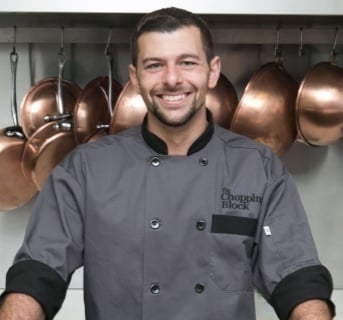After my previous post on grilled Ratatouille, a few people noticed that I had an aluminum foil pouch next to my cast iron pan on the grill and wanted to know what was in it. When I explained it was my grilled Greek potatoes en papillote, the question followed as “huh?”. With this type of response, I figure it was a great opportunity to talk a bit on the subject.
First, the traditional technique of “en papillote” is a bit different as it translates to “enveloped in paper.” The technique has no true origin date as it has always been present and has evolved over time. it is said to have been evolved from many nomadic cultures who would wrap their food in large leaves and either bury the pouch in coals or placed in the lower parts of the fire to be surrounded by heat. This technique not only cooked food quickly and kept it moist by steaming items, but it also kept the scent of food from radiating quite so widely and inviting the attention from critters or other hungry individuals. As time passed (a considerably long time) and many materials morphed such as the development of paper, clay, and metals, more options became available for cooking. The technique of en papillote began to utilize paper instead of leaves to create the pouch. As the seal around the food was much tighter and more efficient, the technique developed an appreciated finesse that has long withstood the test of time.
The traditional technique will often be used in seafood cookery, as most seafood does not require an excessively long cook time. Most commonly the vegetables are places in the center of the pouch, the seafood goes on top and it is sealed by rolling the edge over itself. This allows the vegetables to release moisture as they cook, which in turn becomes trapped steam that cooks the protein and infuses it with those flavors. The oven does provide the most consistent and even heat while cooking, however this technique is also done in steamers or as in my case, over a grill. Using a steamer is comparable to the oven, but on a grill the parchment paper will often burn, so that is why I choose to create my pouch with aluminum foil or even wrap a layer of foil around my parchment pouch.
Cooking food in this way is very healthy because you need a minimal amount of oil to conduct the heat. The “wet” cooking methods will use the steam to fill the pouch and as pressure builds slightly your temperature will maintain roughly at 230°F. Some may ask how this can be if water turns to steam as it boils at 212°F, but it all depends on the quality of your seal on the pouch. The more airtight and stronger the seal is the more the temperature can rise. In any case the likeliness of the temperature going above 240°F is slim because that would require your pouch to hold more than 10psi. As parchment paper is delicate the steam is likely to find a weak spot and escape, releasing that pressure far before you get to 10psi.
The only negative to such a gentile healthy technique is the lack of caramelization and Maillard reaction achieved. These both begin to develop around 300°F and are most efficiently developed at higher and drier temperatures. Therefore, many people will season and spice their en papillote dishes quite strongly or they will finish the dish with a bold sauce to compliment the delicate flavors. I will often (especially with vegetables) open my pouch when it is about 85% done and allow the water to evaporate which will concentrate the flavors and if the temperature is high enough, create a little caramelization and/or Maillard browning.
As a classic technique, I find en papillote to be a fantastic way of cooking delicate proteins and a multitude of vegetables. As it can be done in an oven, steamer or grill, it is a very fun and unique way to wow a group of friends as you tear open your simple pouch to watch the steam dissipate and leave you with a delicious meal. Below you will find the steps to creating your pouch with parchment paper and the recipe for my grilled Greek en papillote potatoes. I encourage you all to step outside of the box and try out this technique to create your own new favorite dish!
Parchment Pouch
1. Fold a large piece of parchment paper in half.
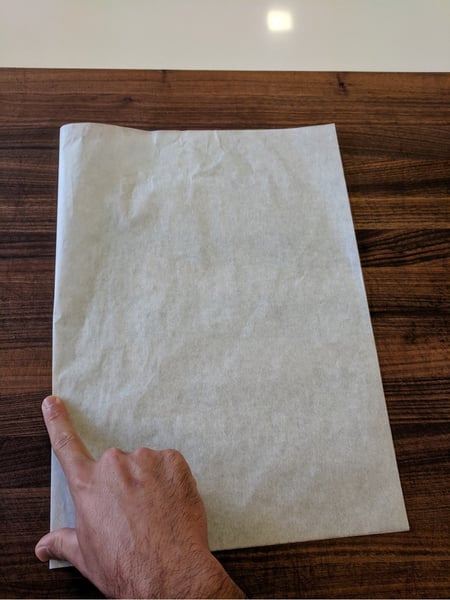
2. Draw a half of a heart using the folded edge as the center of the heart.
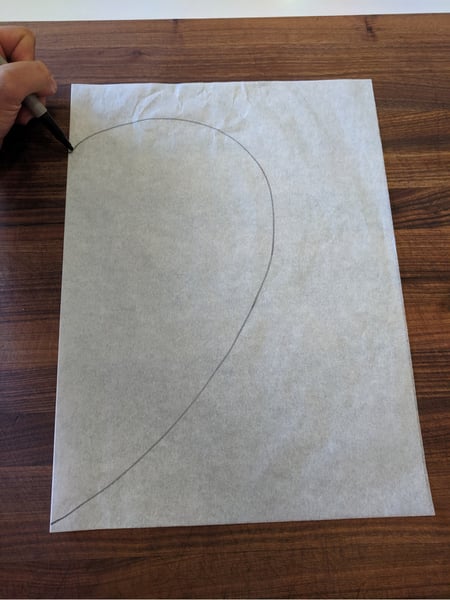
3. Cut on the line and open the heart.
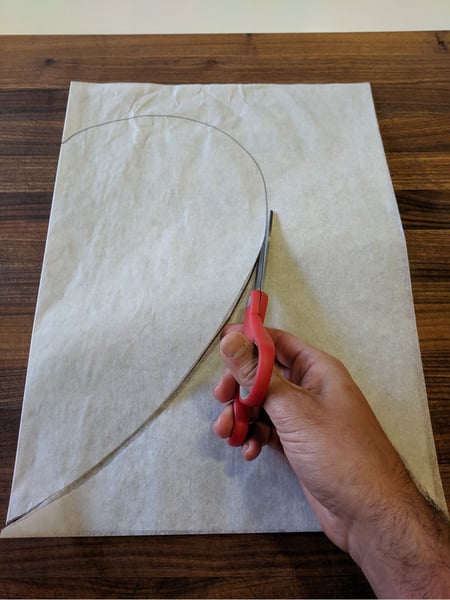
4. After placing your food in the center of one half of the heart begin twisting from the top if the heart and moving toward the point of the heart continue turning until the edge it full sealed and airtight.
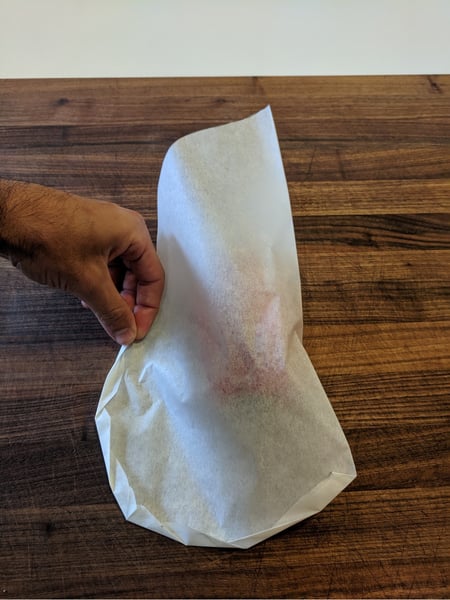
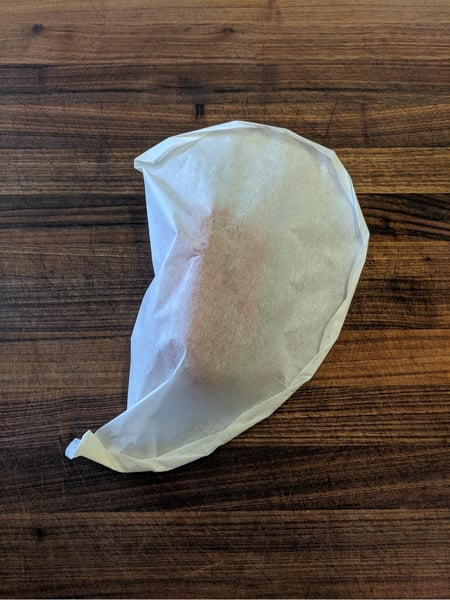
Grilled Greek en Papillote Potatoes
1.5 pound red skin or Yukon Gold potatoes, cut into bite-sized pieces (I normally cut large potatoes into 1/8 pieces and smaller ones into 1/4 pieces.)
3 medium lemons, zested and juiced
2 Tablespoons fresh oregano, rough chopped
2 Tablespoons grapeseed oil
1.5 Tablespoon onion powder
1.5 Tablespoon garlic powder
1 cup of chicken or vegetable stock
Salt and pepper to taste
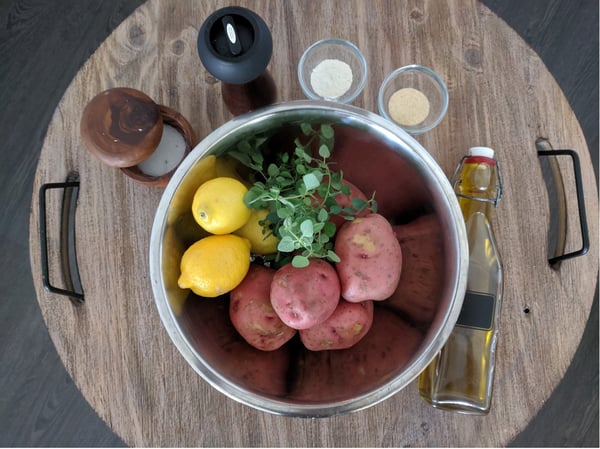
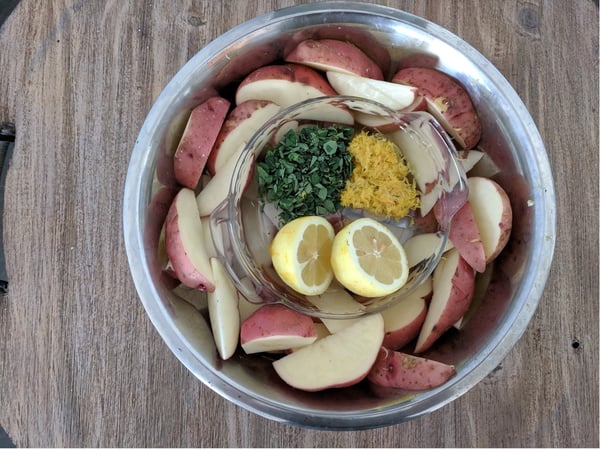
Combine all ingredients in a bowl and toss them together to coat evenly. Pour onto a large sheet of aluminum foil (large enough that the potatoes spread evenly and are not on top of each other). Pull a second sheet of foil equal in size and place this on top, then roll the sides being sure to leave no open edges on the first three sides.
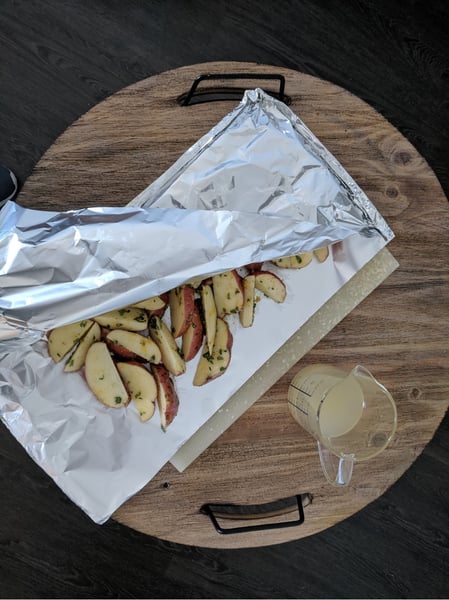
Pour the stock into the open side, being sure to tilt the pouch up slightly to avoid it spilling out. Quickly roll the remaining side and be sure to roll your corners up slightly as they are often leak points. Set the pouch directly on the grill on medium heat for about 25 minutes.
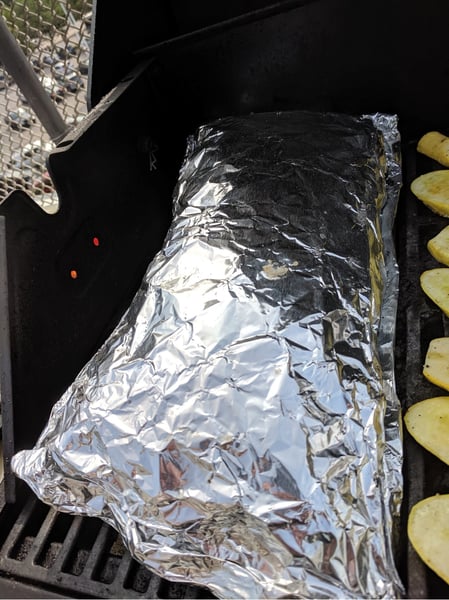
Your pouch should inflate after a short amount of time and if not, you may have a leak in your seal and the cooking may take longer as the steam will not build.
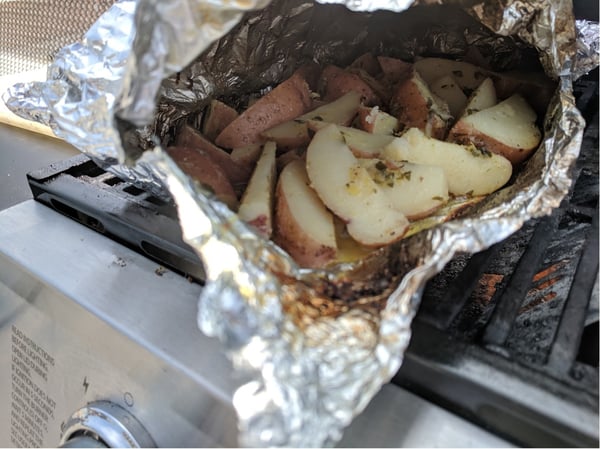
Carefully unroll a side of your pouch using tongs to avoid steam burning you when it escapes. Test a potato to be sure they are tender and if they are, then remove the top piece of foil and close the top on the grill for an additional 5 to 10 minutes to brown and crisp.
We use this same technique with banana leaves to cook snapper in our Seafood on the Grill class coming up on Saturday, August 31 at Lincoln Square.
You can also learn how to make Baked Fish en Papillote in our Butchery Boot Camp on Saturday, November 9 at the Mart. You'll also learn how to bone and filet a whole fish!


